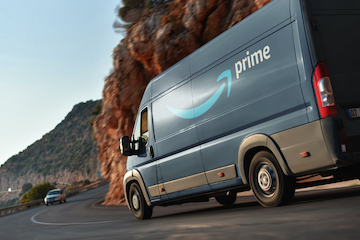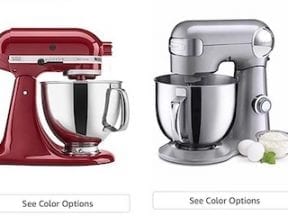
Amazon’s new bidding options for Sponsored Product ads can be effective so long as seller-advertisers do not spend more than the gross profit of each item. Image: Amazon.
The Amazon Marketplace continues to evolve. Amazon is improving its seller tools for success on the platform. The key is understanding how to use them.
Last month Amazon announced improvements to its Sponsored Product ads with the addition of dynamic bids and the option to adjust bids by placement.
My firm has been testing these additions. Are they driving sales and profits or do they simply increase ad spend?
Advertising Automation
Many sellers use third-party automation tools to manage ads. In my estimation, in launching the new tools Amazon is trying to eliminate the need for third-party options.
To be sure, automation can be a valuable tool. It can help a brand scale faster. But I have not been impressed with third-party ad automation platforms for Amazon sellers. I have tested a lot of them. Many do not perform as promoted. They frequently use simple automation rules. But ad effectiveness is not as simple as basic rules.
For example, we have tested automation tools that increase keyword bid prices. The goal is to get a certain number of clicks. These programs do not use artificial intelligence. I’ve seen keywords reach the target without converting, which prompts the systems to move the search term to the negative keyword list. If you’re not paying attention, the tool could remove high-value keywords that had a bad week.
Thus increasing bid prices doesn’t always work. Yes, the increased bid might get the required clicks. But, at what cost? Ad spend can skyrocket. It’s especially risky if you have over 100 keywords in an ad group.
As such, the problem with rules-based automation is that it doesn’t think critically. It doesn’t consider other product attributes. Efficient advertising analyzes a lot of data. Gross profit, for example, is often overlooked in automation. Some items have low gross profit. The cost of acquiring an order needs constant management. Otherwise, advertising isn’t profitable.
Also, consider product variations when advertising. An item may come in multiple colors, but just one color dominates. In that case, promoting the popular variation is sufficient. The customer will see color variations when they get to the page.
There are subtleties to consider when building ads. Hard and fast rules about clicks and negative keywords aren’t effective.
Amazon’s Dynamic Bidding
Dynamic bidding is one of the best improvements I’ve seen on Amazon’s ad platform. Amazon has added dynamic bidding and “adjust bids by placement” selections. These options are available when you build a Sponsored Products ad campaign.
Here is a quick rundown.
- Dynamic Bids Down Only. This option has always been in place. It was never publicized. How does it work? If you bid $1 on a keyword, you could get clicks for any amount under $1.
- Dynamic Bids Up and Down. This option raises the bid if it converts. Amazon will automatically increase the bid up to a maximum increase of 100 percent — if you bid $1, you may see clicks at $2.
- Fixed Bids. You set the bid price per keyword and Amazon doesn’t change it. It’s fixed.
With the “adjust bids by placement” option, you can enter a percentage that you’re willing to increase the bid. Automation adjusts the bid to get the product higher on first-page search results. Also, it will attempt to place ads on product pages. You can increase your bids by up to 900 percent.
Dynamic bidding and bid adjustments work together, with the adjusted bids occurring first.
Here’s an example. Say your initial bid is $1. The ad is set to use adjust bids by placement. To get to the top of the search page, you are willing to increase your bid by 50 percent. In this case, the bid may start at $1.50. Dynamic bidding may increase this to a maximum of $3, as follows.
$1 (initial bid) * 1.5 (50 percent bid adjustment) = $1.50 + $1.50 (100 percent dynamic bidding max) = $3 click cost.
The Caveat
Does it work?
Yes, but with a caveat.
I have employed this strategy for a few ad accounts. Traffic and sales have increased across the board. I can see improved ad placement and more clicks and sales.
So, what’s the caveat?
Before you build a pay-per-click ad strategy, understand the data, especially the relationship between cost per click, product conversion rate, and product profitability. Knowing this helps determines how much you can spend to acquire an order.
For example, say a product page typically converts at 11 percent. The average cost per click is $2. The average cost of acquisition would be $18.18, as follows.
Cost per click ÷ Conversion rate = Cost of acquisition
$2 ÷ .11 = $18.18
Thus the gross profit for this product needs to be higher than $18.18. Otherwise, you’re losing money. Unfortunately, many sellers don’t use this calculation. But, it’s a fundamental ecommerce metric.
So, do Amazon’s new “dynamic bid” ads improve sales? Yes, dynamic bids and adjusted bids can be effective so long as the maximum spend maintains profitability.






